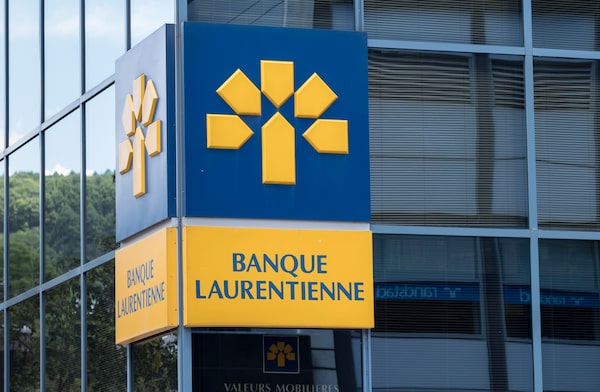
Laurentian at one time had a national presence, but retreated back to its home base in the early 2000s.Paul Chiasson/The Canadian Press
By all measures, the 3.3-per-cent interest rate offered on Laurentian Bank of Canada’s new online savings account is an exceptional deal.
Inflation is running at close to 2 per cent, while savings account rates at the big banks are in the 1-per-cent range and the best rates from online banks and credit unions are 2.3 per cent to 2.8 per cent. One-year Treasury bills issued by the federal government to finance its operations offer about 1.7 per cent these days, while one-year guaranteed investment certificates pay from 1.5 per cent to 2.5 per cent at best.
If you’re properly skeptical about banks, this is the point where you pause. The 3.3-per-cent rate Laurentian Bank launched on Nov. 18 has to be temporary, right? Won’t they yank it abruptly?
Of course they will – a 3.3-per-cent rate is a publicity stunt and not viable in the long term for a bank with shareholders to please. But if you’re comfortable moving money around to get the best return, there’s no reason not to exploit this exceptional rate for as long as it’s available.
Laurentian Bank is a small Quebec-based outfit that is part of Canada Deposit Insurance Corp., which insures eligible deposits of principal and interest combined for up to $100,000. Laurentian at one time had a national presence, but retreated back to its home base in the early 2000s. As part of an effort to re-establish itself nationally, it’s offering the 3.3-per-cent savings rate on a no-fee savings account and a no-fee online chequing account that includes unlimited debits and e-transfers.
Craig Backman, the bank’s executive vice-president of personal digital banking, said 3.3 per cent was chosen because it’s an eye-catching number that tells people Laurentian is serious about competing on rates.
“This is not meant as an introductory rate,” Mr. Backman said. “Our intent is come into the market and be very competitive into the future.” On the Laurentian website, the 3.3-per-cent rate is shown with a prominent footnote saying that all rates are subject to change at any time without prior notice.
A Laurentian Bank subsidiary, B2B Bank, introduced a 3.3-per-cent rate on a savings account back in August. B2B caters to independent investment advisers and brokers, and their clients. Laurentian Bank’s version of the same offer was introduced last week with online ads targeting people outside Quebec.
You have to be completely comfortable with online banking to take advantage of Laurentian’s savings account offer. Sign-up for the account is done online using a process in which your identity is verified electronically, without the need to complete and send paper forms.
Savings accounts such as the one that Laurentian is offering have provided some shelter for savers against the decline in interest rates over the past year. Smaller banks and credit unions are competing aggressively on rates to attract savings deposits that they can use for profitable lending.
The best rate prior to Laurentian’s offer was the 2.8 per cent paid by Motive Financial on its Super Savvy Savings Account. Motive is a division of Canadian Western Bank.
Using an attention-grabbing savings rate to get noticed has been done before by banks with great success. EQ Bank introduced itself to Canadians back in early 2016 by offering a 3-per-cent rate that was so popular the bank was overwhelmed with demand and had to limit the number of people signing up each week. EQ’s rate came down later in the year, but still ranks among the leaders at 2.3 per cent.
EQ raised savings accounts to a higher level of convenience by allowing clients to use them for paying bills and sending e-transfers. The Laurentian savings account is just for savings. If you want to pay bills or send e-transfers, you can either move money electronically to a chequing account at another bank or use Laurentian’s no-fee digital chequing account.
The test of Laurentian Bank’s credibility as an alternative to the big banks will be the rate it offers once the 3.3-per-cent deal is done. Anything below 2 per cent is a fail.
Stay informed about your money. We have a newsletter from personal finance columnist Rob Carrick. Sign up today.